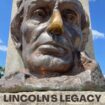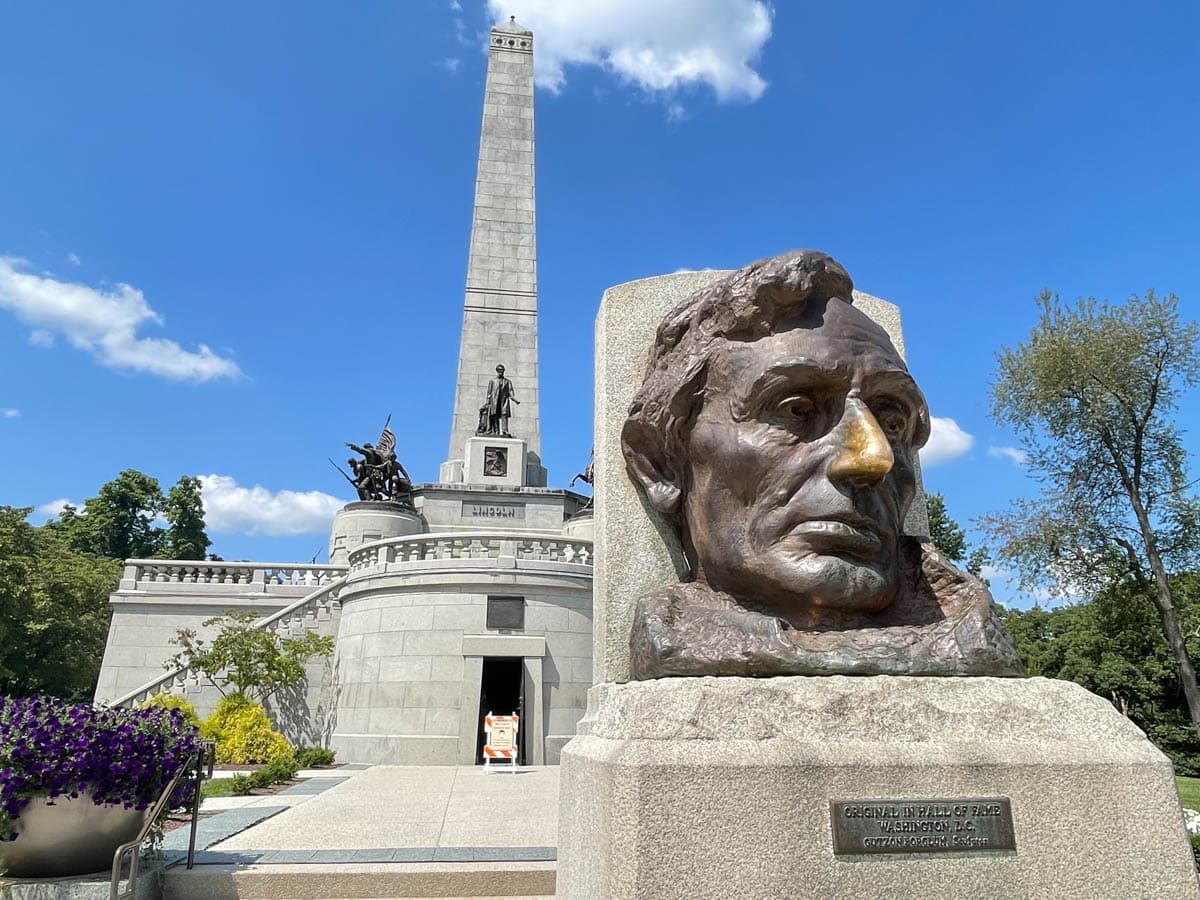
Go World Travel is reader-supported and may earn a commission from purchases made through links in this piece.
I was born and raised in the Chicago area. However, I recall visiting Springfield, the capital of Illinois, just once in my life. That was decades ago and my child’s memory of the place is very hazy.
Flash forward to this past summer when, on my annual trek to the Windy City, I decided to make a side trip to the Land of Lincoln.
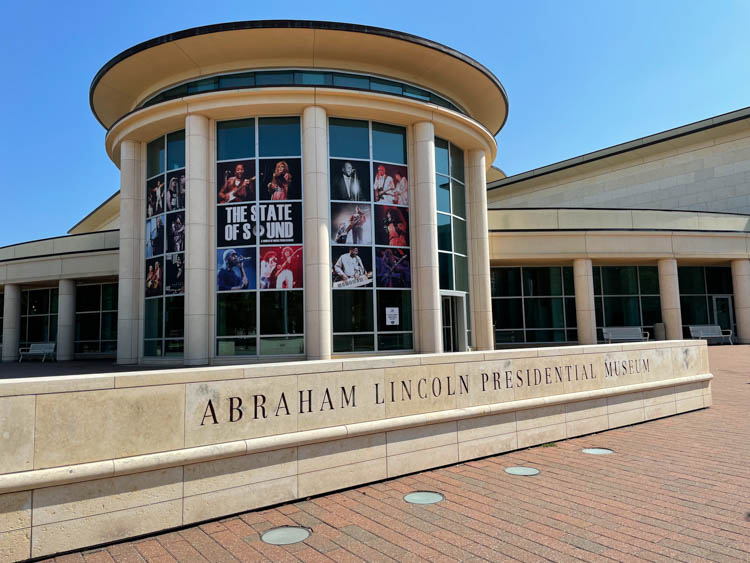
Delve Into All Things Lincoln at the Presidential Museum
Most visitors to Springfield begin their tour of the Lincoln sites at either the Abraham Lincoln Presidential Museum or the Lincoln Home National Historic Site. In my opinion, the top-rated, state-of-the-art Presidential Museum provides the most complete overview of our country’s sixteenth president.
It does an exceptional job of presenting Lincoln’s life story with the use of well-preserved artifacts, high-tech exhibits, interactive displays and multimedia programs.
At over 50,000 square feet, the museum, which occupies an entire city block, is the largest Presidential Museum. It’s also the first major Experience Museum of its kind, engaging visitors via a mix of scholarship and entertainment.
Best Tips & Tools to Plan Your Trip
In the museum’s main atrium area, you’ll come face-to-face with a replica of the front of the White House as it appeared in 1861. Life-sized figures of Lincoln, his wife Mary and their three sons stand front and center to greet visitors.
Nearby is a replica of Lincoln’s boyhood log cabin home. Inside, you’ll embark on a journey through Abe’s early years as a child in backwoods Kentucky, where he taught himself to read.
The museum details Lincoln’s pre-presidential years from his time in the village of New Salem to his departure from Springfield. Exhibits depict his courtship and marriage to Mary Todd and their family life.
Also his legal and political careers, including the Lincoln-Douglas debates and the four-way presidential campaign of 1860. The latter is cleverly treated in present-day form as an election analysis news program.
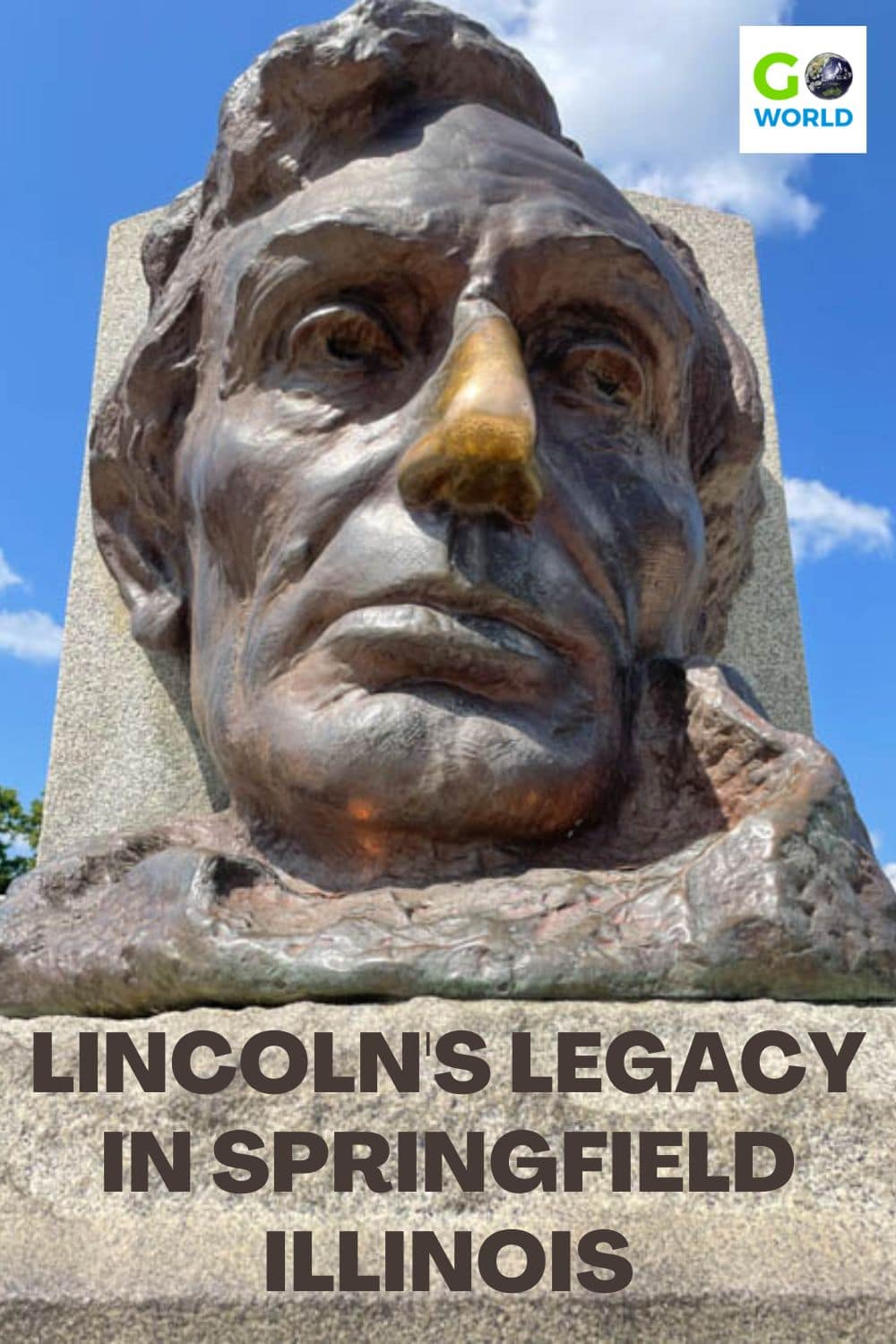
The White House Years
The President’s turbulent and historical years in the White House ensue, concluding with his assassination. Followed by a somber, yet grand, funeral procession back to Springfield. One of the more disturbing experiences for me was walking through the nightmarish Whispering Gallery.
Here, voices whisper vicious rumors about Abe and Mary. In addition, on the walls, cruel caricatures and political cartoons display the ugly sentiments of his opposition.
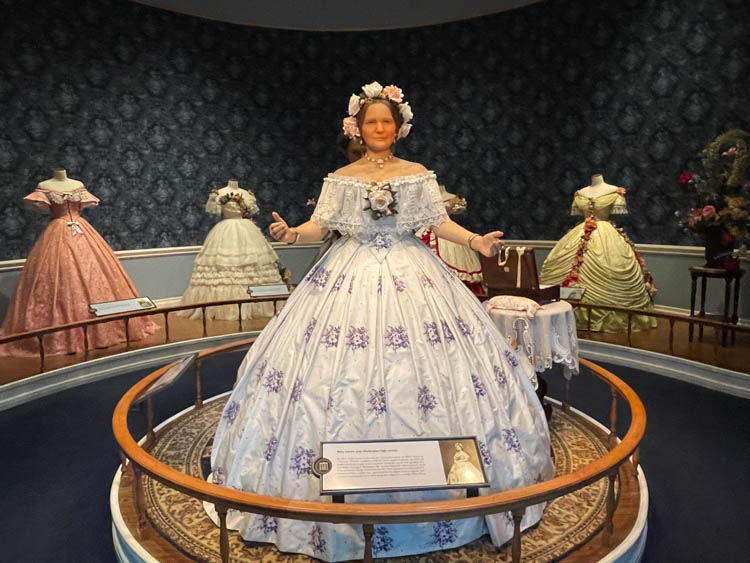
Duds for the Dames
Women’s clothing is the feature of the exhibit, “What Are They Wearing in Washington?”. On display is a figure of Mary Lincoln being fitted for a gown, while surrounded by her social rivals dressed for a ball.
It’s no secret that a number of high-society women at the time made nasty comments about Mary. From the high costs of her clothes and her frequent New York shopping binges to her lavish redecoration of the White House.
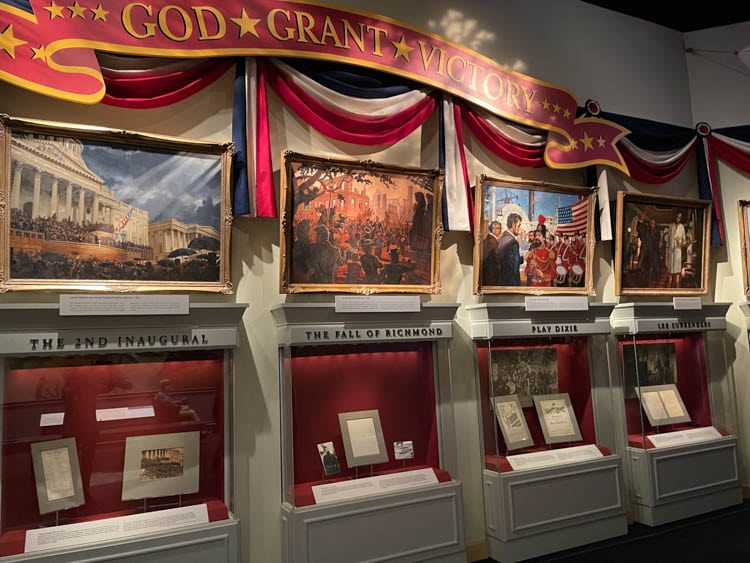
Big Issues of the Times
Slavery, the Civil War and Emancipation Proclamation are naturally given much attention. A map of the states, for example, displays the number of deaths for the North and the South as they surmount in real-time.
This is accompanied by battle sounds. Photos and profiles of some of the soldiers who fought in the battles are also on display.
In the President’s War Cabinet, a debate rages over the Emancipation Proclamation. Some visitors might be surprised to learn it was less about slavery than about saving a disintegrating Union.
Lincoln’s Assassination
A reconstructed Ford’s Theatre shows Abe and Mary in their box enjoying the production, while John Wilkes Booth sneaks inside. Though we all know what’s coming, it’s still difficult to watch as the President is shot.
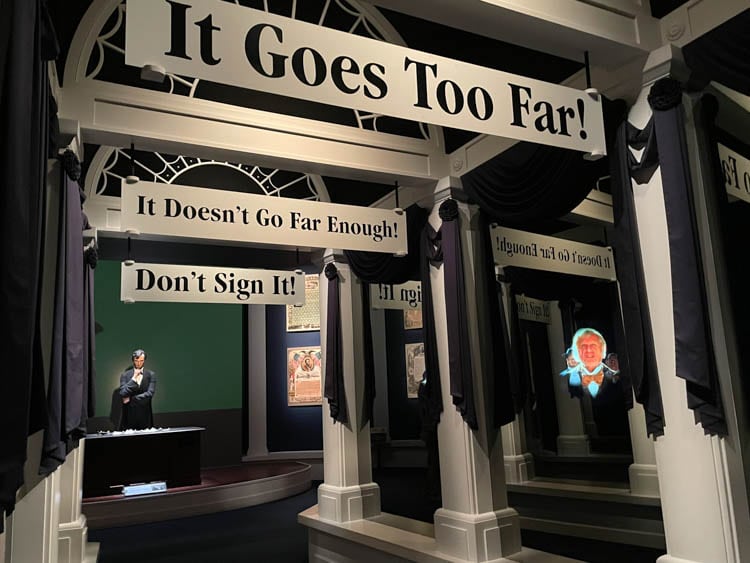
Theatrical Shows Bring History to Life
The holographic and special effects theaters educate in a highly compelling manner. This includes spectral images, live actors and plenty of action.
In “Ghost of the Library,” a live host welcomes the audience to the library. The host then explains and demonstrates the discoveries waiting to be made in a presidential archive.
As he speaks, the ghosts of Civil War soldiers rise from various objects. As do those of Lincoln, Mary and others, who appear and disappear.
A quill begins writing in the air in the president’s handwriting. The message here is to value the objects that connect us to history, and understand that they also can illuminate the future.
The other show, titled, “Lincoln’s Eyes,” presents the personal and political issues of Lincoln’s presidency. It is told by an artist (conveyed via a special effects projection) commissioned to create the painting of Lincoln for the front of Union Theater. It’s an immersive piece of theatre with gripping Civil War battle scenes and slavery depictions.
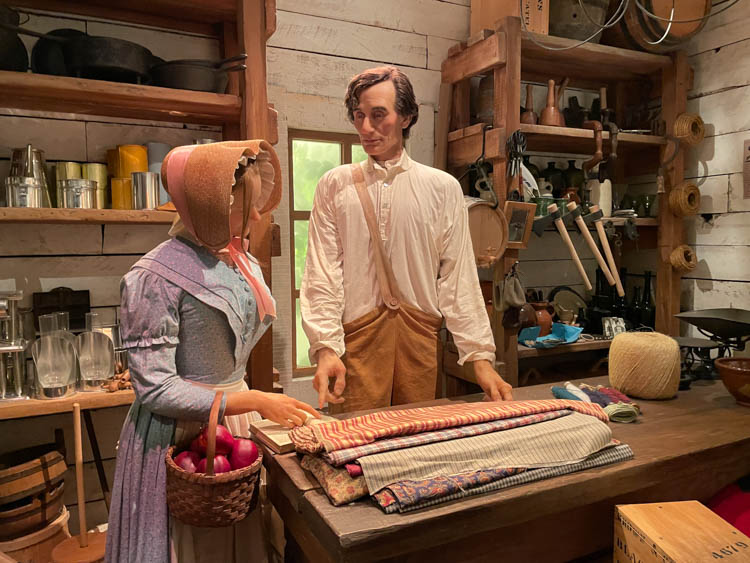
Lincoln Artifacts Abound
You’ll find the institution’s outstanding Lincoln Collection in the Treasures Gallery. Items, which number in the tens of thousands, are exhibited on a rotating basis. Included is an original handwritten copy of the Gettysburg Address.
In addition, are the evening gloves in Lincoln’s pocket the night he was assassinated and the quill pen used to sign the Emancipation Proclamation.
Across the street from the museum is the Abraham Lincoln Presidential Library. Millions of preserved artifacts and documents are housed in this building.
The library serves as a resource for scholars and researchers. Additionally, it provides information to those interested in tracing their family’s genealogical ties to Illinois.

Get an In-Depth Look at His Life in Springfield
To see the only home Lincoln ever owned, head to the Lincoln Home National Historic Site. Stop at the visitor center for orientation films and exhibits. Then join your free, timed tour, which is conducted by a National Park Service Ranger.
Your guide will brief you on the salient facts about the neighborhood and its occupants. These were comprised of a cross-section of society from laborers to elected officials. Though the town was the focal point of government, hogs and other livestock ran free through the muddy streets.
The Lincoln Home was originally a small cottage when Abe and Mary bought it for $1,500. Later, they added on to it to accommodate their growing family. The Lincolns lived here for seventeen years.
A simple nameplate on the front door reads “A. Lincoln,” and was the only ownership identification during the family’s residency.
Upon entrance, you’ll walk into the parlor, where the Lincolns entertained guests. Here’s where the Republican Party committee formally notified Abe of his nomination, and where the road to Washington began.
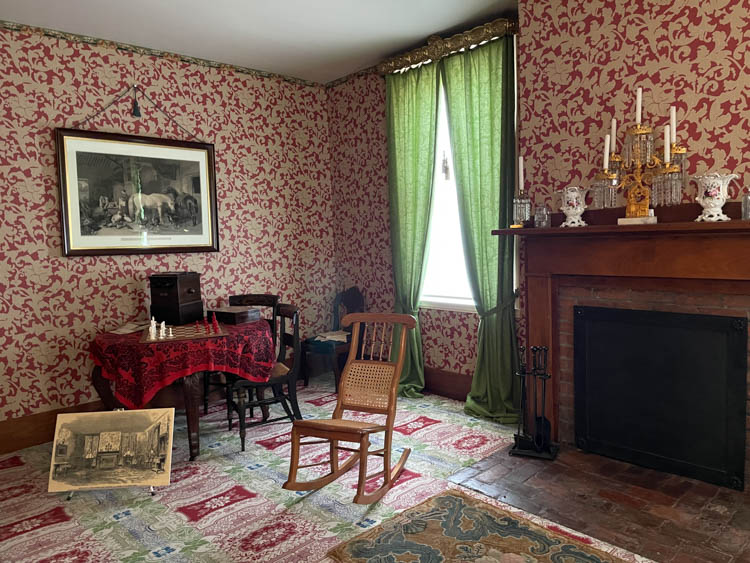
Inside Lincoln’s Home
Your tour of Lincoln’s home includes the sitting room, kitchen, master bedroom suite, boys’ bedroom and guest bedroom. No indoor plumbing, just an outhouse and chamber pots hidden under the beds, though Mary’s commode is the real thing.
As are such original items as Mary’s sewing table, Abe’s bootjack and a stereoscope (an 1850s Xbox-like entertainment system!). Then there’s the doorbell and staircase railing. “Touch it,” our guide instructed, “and you’ll be as close to shaking Abe’s hand as you can.”
Some people in our tour group asked the guide about the busy wallpaper, which competed with the busy carpeting – in a not-so-eye-pleasing way. He explained that the style of the time emphasized harmony through contrast. Not sure that I would have been able to get a good night’s sleep in those bedrooms.
The Lincoln’s only surviving son Robert assumed ownership of the home. He then sold it to the people of Illinois for $1. For 85 years, the State preserved it as a memorial to the President, before donating it to the U.S. Government in the early 70s. The National Park Service then created an 1860s neighborhood to showcase the historical area.
Though the Lincoln home is the main attraction, there are a few other self-guided exhibits located in some of the houses within the walkable, four-square-block site.
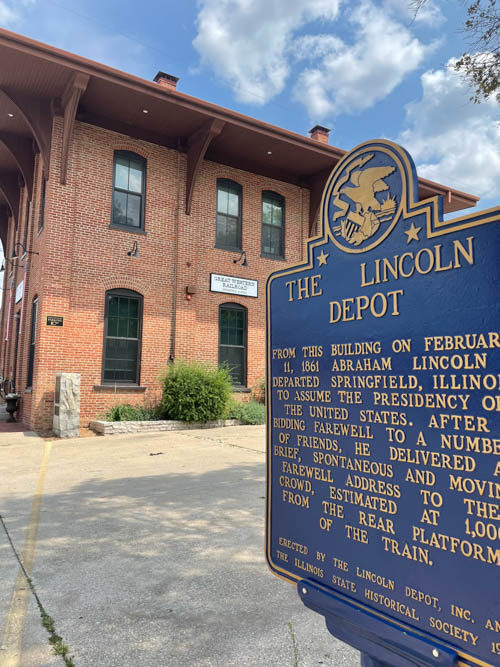
Lincoln Heads to the White House
Continue on your Lincoln journey with a stop at the Lincoln Depot. When Lincoln left Springfield as President-elect, on February 11, 1861, he departed from The Great Western Depot. He stood on the back of the train that would take him from his home of 24 years to the nation’s capital. The rest, as they say, is history.
More than a thousand residents of Springfield gathered that morning to see Lincoln off. Moved by the outpouring of support, he gave an impromptu speech. Later, with the help of his personal secretary, he committed the speech to paper. Lincoln didn’t know that it would be the last time his feet would touch Springfield soil.
The Depot is a small, modest building that once housed an office, along with separate male and female waiting areas. Over the years, it passed from one owner to the next and survived several fires.
It was eventually sold to Pinky Noll for the future home of the Noll Law Office. Pinky’s husband Jon Noll, a local attorney, is interestingly a distant descendent of William Herndon, Lincoln’s law partner at the time of the 1860 election.
After a major renovation, the Depot reopened in 2013 and was subsequently added to the National Register of Historic Places. Visitors can do a self-guided tour of the small museum to learn more about its history via pictures and video.
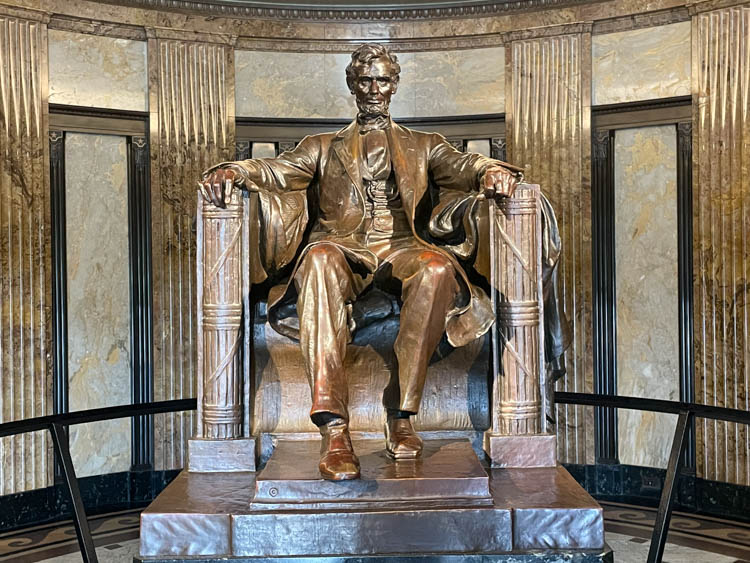
Lincoln Laid to Rest
The Lincoln Tomb State Historic Site is where the remains of Lincoln lie, along with those of his wife and three of their four sons. Lincoln’s oldest son, Robert is buried in Arlington National Cemetery. The 117-foot granite tomb is located within Oak Ridge Cemetery, the second most visited cemetery in the country behind Arlington.
Outside this impressive landmark is a large bronze bust of Lincoln. Visitors from all around the world have rubbed the statue’s nose to a glossy shine for luck. Nobody knows how this tradition got started. But it has become a ritual for many of the half a million plus people who make a pilgrimage to the site each year.
Stairs lead to a terrace, above which rises the towering obelisk. On top of each of four pedestals are sculpture groups representing the four Civil War military services.
You can actually walk inside the tomb. Here the rotunda and corridors contain smaller-scaled versions of important Lincoln statues. In addition are plaques with excerpts from Lincoln’s farewell address to Springfield, the Gettysburg Address and his Second Inaugural Address.
Proceed down the hallways to the burial chamber. Lincoln’s remains are actually below the chamber because thieves attempted to steal his body back in 1876.
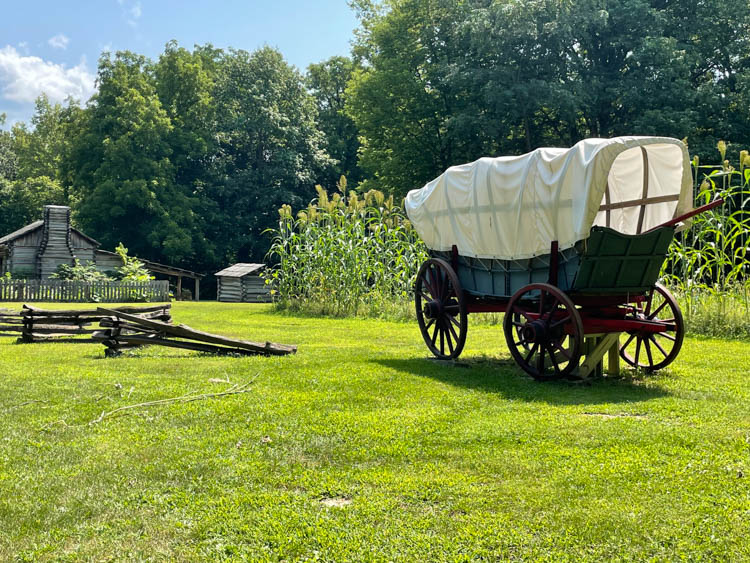
Walk Back in Time at Lincoln’s New Salem State Historic Site
To see where it all began for Abe in Illinois, drive out to Lincoln’s New Salem State Historic Site. You’ll be transported back to when a young Lincoln split rails, worked as a store clerk and postmaster and experienced a number of pivotal events that planted the seeds of his destiny.
Lincoln taught himself about the law through books. This, despite having only one year of frontier schooling. He took to the profession with a passion. People in the village hired him to draw up wills and contracts.
He also joined a debate club, where he excelled at presenting his opinions in a persuasive, yet folksy manner. It became clear that Lincoln had the ability to talk to people from all walks of life. Also that this once uncouth country boy had depth and dignity.
Many of the structures at New Salem were rebuilt over the original sites. However, they closely adhere to the authenticity of the 1830s when Lincoln lived there. As you stroll around, history comes to life through costumed characters who help to interpret the past.
A number of the log buildings represent the homes of actual people who resided in New Salem. Some are places of business, i.e., blacksmith, cooper, doctor, general store, tavern and carding mill.
The Denton Offutt Store, for example, is where Lincoln was first hired. This was before he and his partner William Berry opened a nearby shop of their own (which subsequently failed).
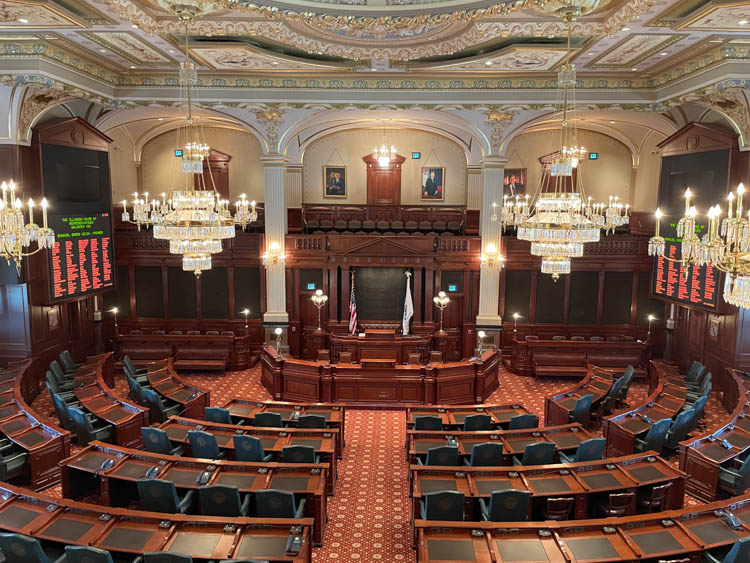
Tour the Seat of the Illinois State Government
A tour of the Illinois State Capitol should also be on your must-see list. The building, which is a beaut, boasts a 405-foot dome, making it the tallest domed state capitol in the country.
Constructed in the Italian Renaissance Revival style, the structure, which was completed in 1888, features frieze decorations. Also 9,000 pieces of stained glass, in 42 different colors.
Your guide will take you through several rooms and halls of the building. This includes the handsome House and Senate galleries, Governor’s reception area, Hall of Governors and Old Supreme Courtroom.
The massive European crystal chandeliers are impressive. As are the gold and bronze leaf painted bas relief sculptures and the extensive use of mahogany, walnut and marble throughout the building.
The tour provides information about the many paintings dotting the building’s ornate walls, as well as the various sculptures depicting prominent historical figures. Of note is the bronze sculpture of a woman standing in the center of the rotunda.
With open arms, she appears to be welcoming all those who enter this significant site. At the base of the sculpture, on the marble floor, is a star with eight points, one for each letter in the word Illinois.
A bit of trivia for movie aficionados: “Legally Blonde 2” was filmed here in the Illinois House chambers. The U.S. Capitol wasn’t available and this one resembled the U.S. Capitol more closely than any other in the country.
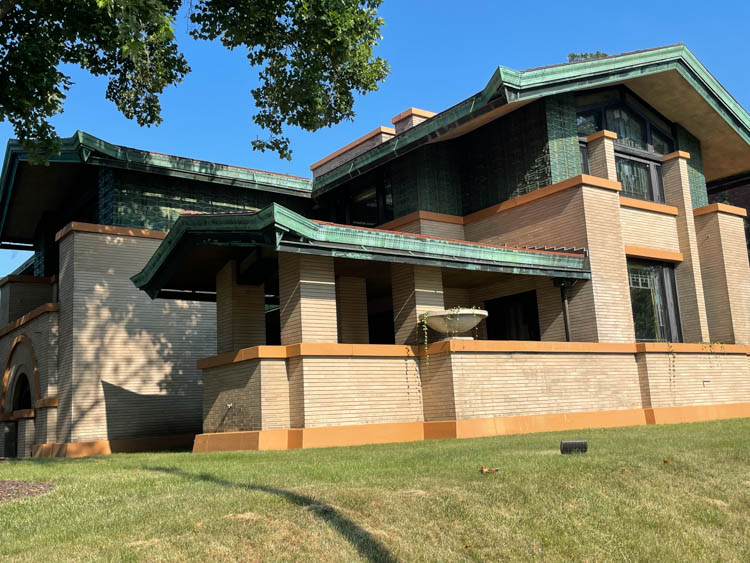
After Abe, There’s Frank
Though Abe takes centerstage in Springfield, there are plenty of other non-related Lincoln activities to enjoy.
You can tour the Dana-Thomas House, one of Frank Lloyd Wright’s famous Prairie-style homes, get your kicks on a variety of Route 66 attractions, spend some time outdoors at one of the many lakes, parks and other green spaces around town or shop till you drop at the numerous local boutiques, antique shops and flea markets. And of course, you’ll definitely want to explore Springfield’s food scene.
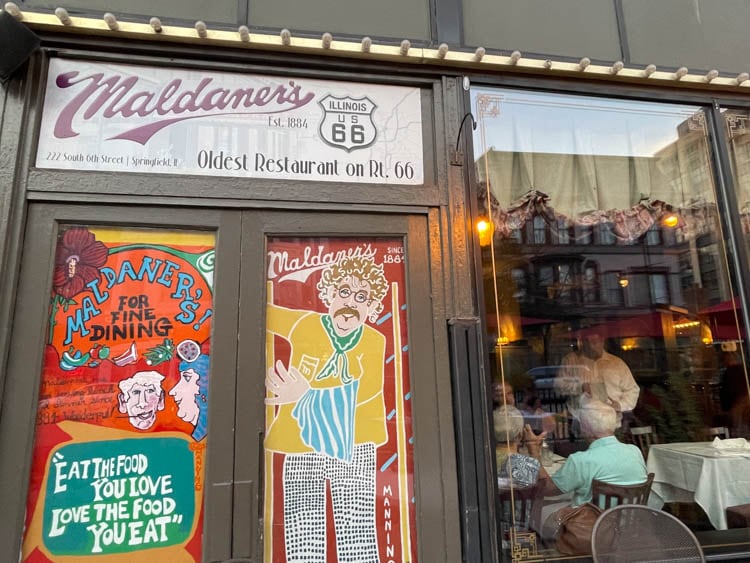
When Your Stomach Grumbles, Head to These Hot Spots
Start your day at Incredibly Delicious, a French bakery and café located in the picturesque, historic Weber House.
You’ll have a hard time choosing from all the incredibly scrumptious croissants, scones, artisanal breads, handmade pastries, quiches and more. Enjoy your treats on the delightful outdoor patio with its secret garden ambiance.
When lunchtime rolls around, head to local favorite, Moxo’s. Here you can enjoy a variety of soups, toasted sandwiches, salads and homemade pot pies.
I couldn’t resist trying the café’s Baker’s Mac & Cheese with spinach, toasted panko and portabella mushrooms. And of course, I got one of the ginormous peanut butter cookies to-go for sustenance later.
Maldaner’s is a must for dinner. Established in 1884, this is Springfield’s oldest restaurant and one of its finest. It’s fun to imagine the wining and dining that must have been done at this establishment at the turn of the last century.
Today, Chef-Owner Michael Higgins is at Maldaner’s helm. Higgins takes pride in offering seasonal, local and regional ingredients that have been artistically prepared with a Mediterranean influence.
The menu features specialties like Beef Wellington, Pistachio-crusted Scallops, Pork Chops in Local Gooseberry Sauce and a variety of pasta and risottos.
Save room for the Queen of Sheba, a decadent flourless chocolate cake with chocolate ganache filling. On the lighter side, there’s homemade lemon sherbet, a 120-year-old tradition, topped with raspberry sauce.
There are also plenty of spots for a libation or two, as Springfield has its share of drinking holes, microbreweries and wineries. Yes, they do make wine in the Heartland.
Book This Trip
Start planning your unique vacation to Springfield, Illinois today. Get prepared with insider tips on the best shops, hotel and VRBO accommodations, local restaurant reviews and more through TripAdvisor and Travelocity.
Find the best flight deals, car rental reservations and vacation packages through CheapOair.
For all things Springfield: www.visitspringfieldillinois.com
Author Bio: Debbie Stone is an established travel writer and columnist, who crosses the globe in search of unique destinations and experiences to share with her readers and listeners. She’s an avid explorer who welcomes new opportunities to increase awareness and enthusiasm for places, culture, food, history, nature, outdoor adventure, wellness and more. Her travels have taken her to nearly 100 countries spanning all seven continents, and her stories appear in numerous print and digital publications.
- Life of a Champion: Exploring the Muhammad Ali Center in Louisville - April 19, 2024
- What It’s Like to Live as an Expat: Lake Chapala, Mexico - April 18, 2024
- Top 5 Spots for Stargazing in North Carolina - April 17, 2024

